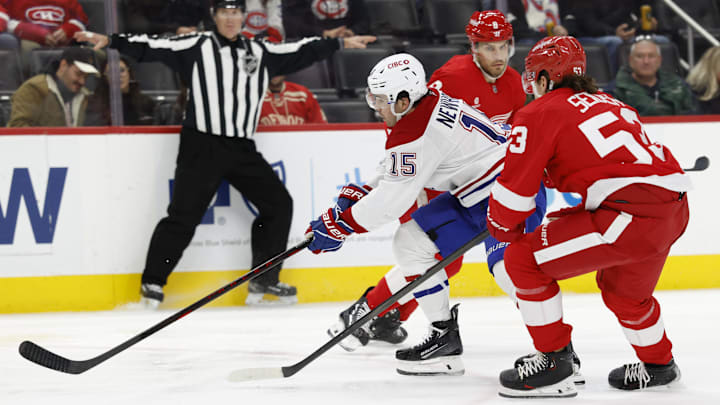In recent years, tournaments have gained momentum in the NHL as an attempt to woo new fans. The 4 Nations Face-Off, World Cup of Hockey, and NHL Global Series all offer different opportunities for to be exposed to the sport. What has faded over time, though was the 1938 NHL European Tour, which concluded 87 years ago today. It was the first time the NHL played overseas.
The Detroit Red Wings and Montreal Canadiens headed to England and France to spread goodwill on April 21,1938. Before heading to Europe, the teams played three exhibition games in Nova Scotia. Detroit took the final game of the series 7-2. They then made their way abroad and played a nine exhibition games, with Montreal (unfortunately) taking the series 5-3-1.
This wasn't the NHL's first attempt at going global. The league had previously failed to get tours off the ground in 1924, 1932, and 1933. As it turns out, the fourth time was the charm.
At the time, the NHL was expanding its footprint. The Detroit Red Wings were still a relatively new team to the league, but hot off of two Stanley Cup championships. Montreal was a hub for hockey, and pairing the two teams against each other just made sense.
Game one went to the Canadiens in overtime. Montreal Hockey historian Dave Stubbs wrote:
“Although a few British reporters sniffed at the quality of action on sticky ice, fans adored the show, as they did when the teams moved on to Brighton for a 5-5 tie two nights later.
They especially got a charge out of two fights in Brighton; Marty Barry of Detroit took on Red Goupille of Montreal, and Pete Bessone of the Red Wings exchanged blows with Toe Blake of the Canadiens.”
Europe was on the verge of World War II. Tensions were rising, and the chance to escape the chaos for a few hours of hockey was a welcomed opportunity. The NHL was more than happy to offer that escape
By the time the teams arrived, anticipation was high, and so were ticket sales. The opening match drew a crowd of 8,000 people on April 21,1938. That game, along with game two, took place in London, England. Game two ended in a 5-5 tie.
Allegedly, there were staged fights during some of the games, though the British did not care for it. From the Subbs piece:
"'[The] Canadiens and Detroit staged a fake fight, which did not go over so big with the crowd, but their passing plays did get fine notice,' MacDonald wrote to Gazette columnist Marc McNeil."
The next leg of the tour was Paris, France. Montreal opened that stretch in a high-scoring 10-8 game on April 25. The Red Wings struck back with a 4-3 win two days later. Montreal secured the Paris series win on April 29.
The third and final stretch of the tour took them back across the Channel to Brighton, where the two teams split the series. More people showed up to the final games, with crowds topping 8,500 people.
All in all, a 5-3-1 finish wasn’t bad for a Detroit team that had missed the playoffs that year. And while the series was strictly exhibition and not taken too seriously by either club, some English fans had expected a more physical product.
“[In England] the press has made everyone believe N.H.L. hockey is murderously rough, and there was nothing in the Earls Court show to support that idea,” wrote Dune MacDonald, formerly of The Montreal Gazette.
Still, the NHL considered the tour a success. Canadiens GM Cecil Hart even predicted that professional hockey could reach England and France by 1943. Unfortunately, history had other plans.
